
views
Recognizing the Symptoms and Causes

Look for any airborne irritants in your home. Coughing cats are relatively rare, so if your cat starts coughing have a look around for any obvious sources of irritation. Airborne aerosols (deodorants, air fresheners, hair spray, and perfume) are all very irritating to your cat's delicate airways and may make her cough. Cats are also sensitive to tobacco smoke. If you suspect an obvious airborne irritant is causing the cough, take your cat outside for some fresh air, or open all the windows to ventilate the room.

Invest in a good vacuum cleaner with allergen filters and vacuum daily. One common trigger for feline asthma is house dust mites. If possible, keep your pet off soft furnishings, which harbors dust mites, including beds and sofas. Of course, it is pretty difficult to keep cats off of soft furnishings, so if your cat is going to be lounging on your bed or sofa, make sure you vacuum these surfaces every day. Carpets also harbor dust and dust mites. Vacuum any carpet in your home at least once a week. If the carpets become too difficult to keep up on a daily basis, consider removing them and having laminate or hardwood flooring installed in your home.
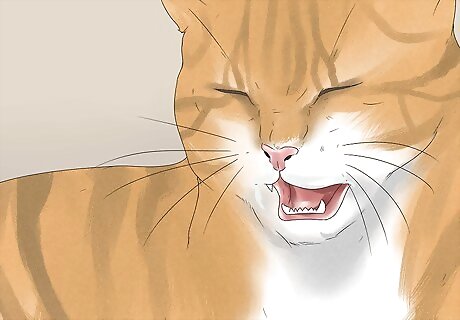
Notice if your cat is sneezing often, has sticky eyes, or a snotty nose. These are all symptoms of an upper respiratory tract infection, which can sometimes cause a cough. Bathe her eyes and nose to free them from discharges. This will help her to feel better and breathe more easily.
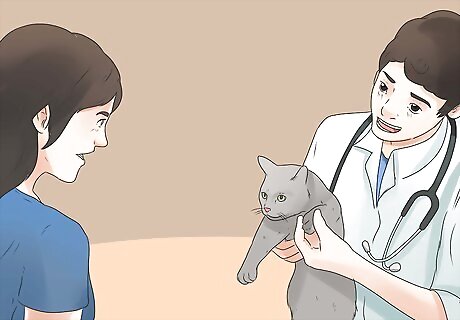
Get your cat checked by your vet if she stops eating, is lethargic, or has to breathe through her mouth. Cats can suffer from colds or flu, just like we can, though it is caused by different bugs so you don't worry too much about cross infection. Your vet can confirm if your cat has an illness. Your vet may require more rigorous testing, such as an x-ray, to determine how severe your cat's cough is.
Getting An X-Ray of Your Cat
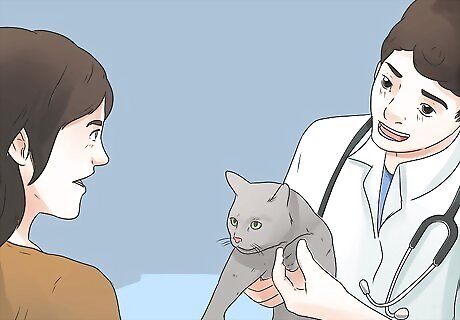
Ask your vet to look for any foreign objects in your cat’s airways or any signs of infection. Conditions like a foreign body in the airway (such as a grass awn lodged in a bronchus), bronchitis, asthma, and infection (bacterial, viral, and parasitic) can all cause your cat to cough. However, it is an interesting fact of nature that cats, unlike dogs, rarely cough as a result of heart disease. This may have to do with the distribution of cough receptors in your cat’s lungs. Due to this wide range of possible conditions, it is important to reach the right diagnosis. Treating a heartworm infection, for example, with an asthma inhaler is unlikely to be helpful. Neither would dosing a cat with anti-parasite products help a cat with a grass awn lodged in their lung.
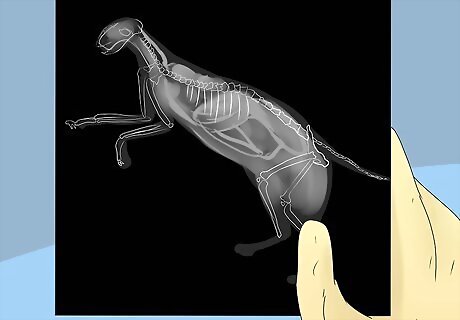
Allow your vet to take a radiograph. A radiograph, or x-ray, is the most commonly used test. It produces an image of the cat's chest and lungs. X-rays produce an image by showing the different density of tissue in the body. A dense tissue like bone blocks x-rays (producing white on the image), while air does not block x-rays at all, so the plate will be black. Soft tissue such as the heart, lungs, fat, blood, and muscle have subtly different densities and produce different shades of shadow on the plate.
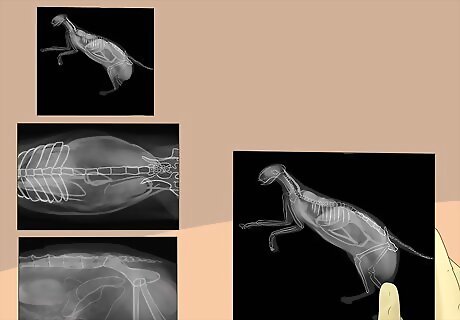
Be aware that three pictures or "views" of your cat will be exposed on the x-ray. These are the left lateral (the cat lying with her left side in contact with the table), the right lateral (right side down) and the dorsoventral (the cat resting on her tummy with the x-ray beam passing first through her spine then her breastbone). Three views are taken to reduce the risk of missing any pathology in the chest. This can happen if too few views are taken because of your cat’s anatomical quirks. When the cat rests on her side, the lower lung is compressed by the weight of the heart above it, and the lung above that. This makes the lower lung denser, which can hide objects such as tumors. To be certain there is nothing of interest in the left or right lungs, your cat needs to have images taken with her lying on both sides.
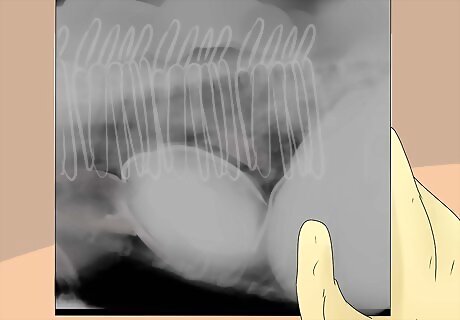
Look for any lung masses on the x-ray. Masses within the lung tissue such as tumors or abscesses tend to be denser than the lung and show up on the x-ray as brighter than the surrounding lung. Unfortunately, due to the laws of physics, it is only possible to see lumps that are greater than 5 mm in diameter. It is not possible to distinguish any smaller lumps from normal lung tissue. Keep in mind that lung tumors are more likely to cause rapid breathing than coughing in the cat.
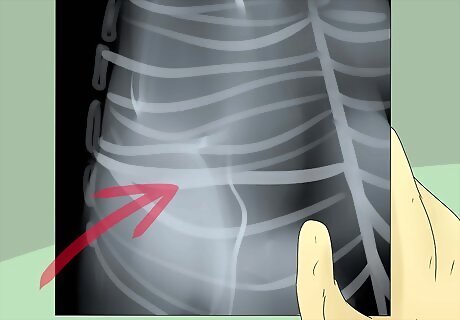
Check the x-rays for pleural effusions. This is fluid contained in your cat’s chest cavity that bathes the outside of the lungs. If sufficient fluid builds up, the pressure causes the lungs to collapse. This does not usually cause coughing, but if present it will be visible on the x-rays.
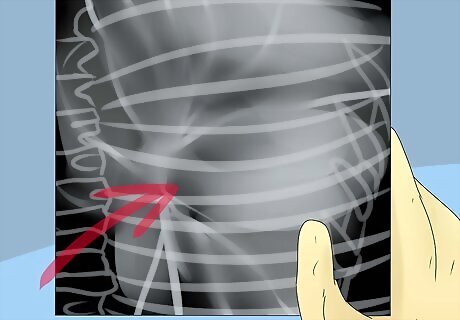
Look for any signs of thickened airways. Air travels into the lungs down the windpipe, which then splits up into smaller airways called bronchi, which split into smaller airways called bronchioles. Think of the windpipe as a tree trunk and the bronchi and bronchioles as branches and twigs. If the pipe of the airway becomes inflamed or thickened, which happens with bronchitis and asthma, then the walls show up as a brighter white than the surrounding tissue. Both bronchitis and asthma are a common cause of coughing, so x-rays are useful to visualize the airways and check for this issue.
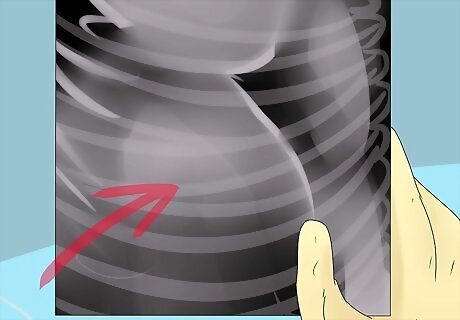
Check for any fluid in your cat’s lungs. Fluid can build up within the lung tissue as a result of heart disease, such as pulmonary edema, or an infection like pneumonia. While it is not possible to say for sure what the fluid is on an x-ray, there will be clues as to the cause based on your cat's medical history. For example, a cat that does not have a heart murmur but is running a fever and coughing is likely to have pneumonia. To be sure, it may be necessary to run additional tests. A bronchial wash is the most useful test for fluid build up because it harvests a sample of fluid.
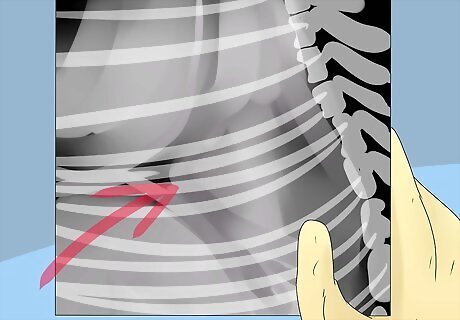
Be aware of the limitations of using an x-ray to get a diagnosis. An inhaled grass awn stuck in your cat’s airway may appear as soft tissue density on the x-ray image, due to the build-up of secretions in the lung downstream of the blockage. But the x-ray image cannot distinguish the grass awn from a tumor or a localized infection. You will need to run additional tests on your cat to get a clearer diagnosis.
Getting Other Tests Done on Your Cat
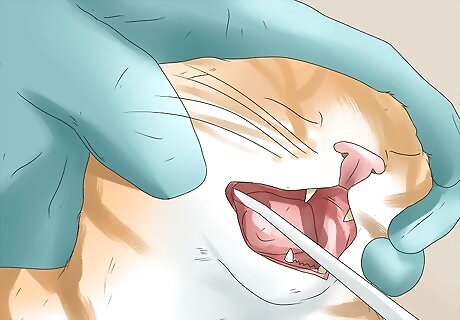
Have your vet do an endoscopy. An endoscopy is done with an endoscope, or tiny camera mounted on a fiber optic cable, that is passed down your cat's windpipe to examine your cat’s airways. Your cat will be under general anesthesia during this procedure. An endoscopy is used to look for foreign bodies in your cat's airways such as grass awn and lungworm larvae. Via endoscopy, it is possible to see if a fluid is present in the airway lumen, and if so, whether it is pus, mucus, or blood.
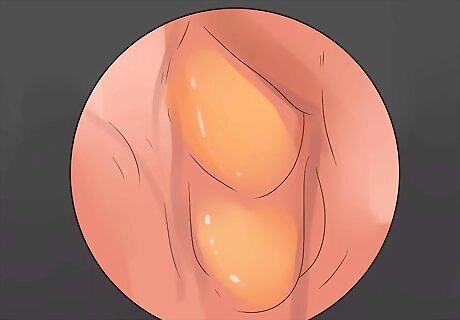
Be aware of the drawbacks of an endoscopy. Felines tend to have smaller sized airways. This smaller airway diameter means that even a small endoscope will completely fill their windpipe and the cat cannot breathe while the endoscopy is being performed. To allow your cat to breathe, an endoscopy has to be done in short bursts of 30 seconds at a time, with the endoscope removed in between to allow the anesthetist to fully re-oxygenate your cat.
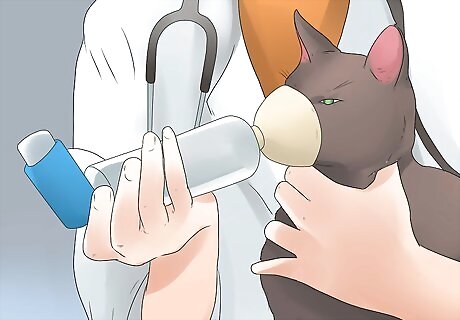
Allow your vet to perform a bronchial wash on your cat. This procedure is done with your cat under general anesthetic. A fine tube is passed into your cat's windpipe and down into the lungs to where the windpipe divides to the right and left lungs. Around 10 ml of sterile saline is injected down the tube and immediately sucked back up again. The tube is removed and the saline wash is transferred into a sterile container. Like endoscopy, this procedure has to be done quickly, because for the period of time the tube is in their windpipe, the cat cannot breathe.
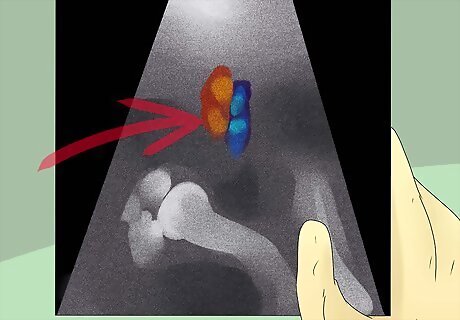
Understand the samples obtained by a bronchial wash. The samples obtained by a bronchial wash are used in a cytology and in a bacterial culture test. Cytology is done by using a small sample from your cat’s lungs and looking at it under a microscope to see what cell types are present, from cancer cells to parasite eggs or larvae, to inflammatory cells. This helps your vet make a diagnosis and distinguish any cancer, parasitic lung disease, pneumonia, or allergy cells in your cat. A bacterial culture sample is used in a procedure that grows any bacteria present in the lung sample to find an antibiotic that will effectively kill the bacteria.
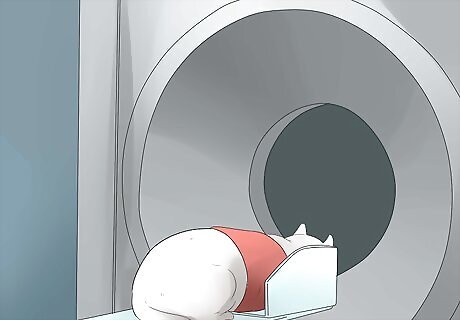
Have you vet do a CT scan or MRI. These advanced imaging techniques have very fine resolution and give a 3-D image, unlike an x-ray, which gives a 2-D image. This makes it easier to see small tumors that could be missed on an x-ray, and generally give a much more detailed picture of your cat’s lung pathology.
Making Your Coughing Cat Comfortable
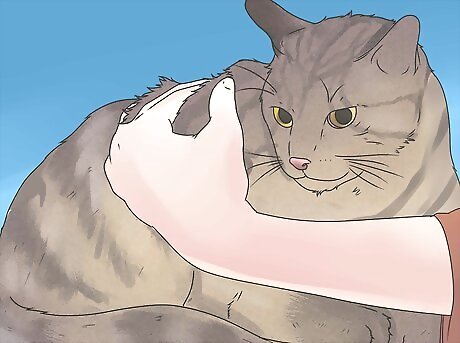
Stroke and soothe your cat. Some cats can work themselves into a panic attack if they are short of breath. The simple act of calming her down can help her to relax and catch her breath.
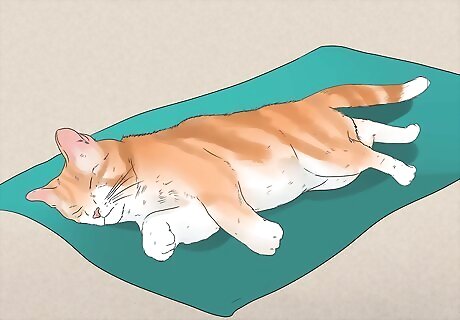
Leave your cat in a quiet and undisturbed area to rest. Avoid stressing her out, especially before a vet appointment. Keep other pets and children away from her. If she is short of breath the last thing she wants to do is be chased by other animals.
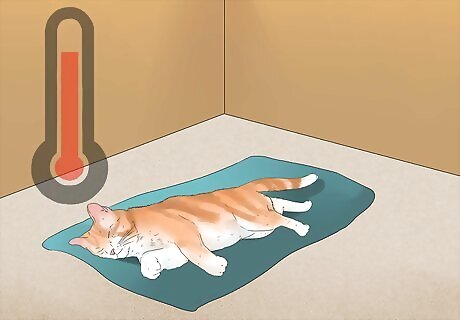
Make sure the room is not too hot or overheated. Overheated areas cause your cat to breathe more quickly to cool down. If she is already struggling with her breathing, this will only add to her stress and discomfort.
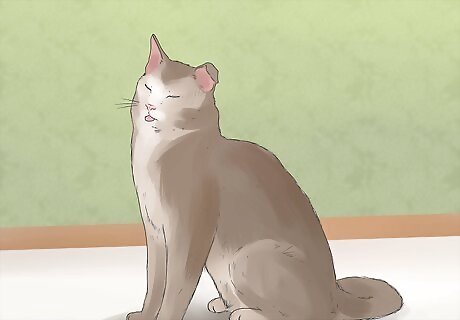
Keep your coughing cat indoors. Her natural instinct may be to go to ground and hide if she is feeling irritated. If she hides the yard and you can’t find her, she may deteriorate and you wouldn't be able to locate her to take her to the vet.



















Comments
0 comment